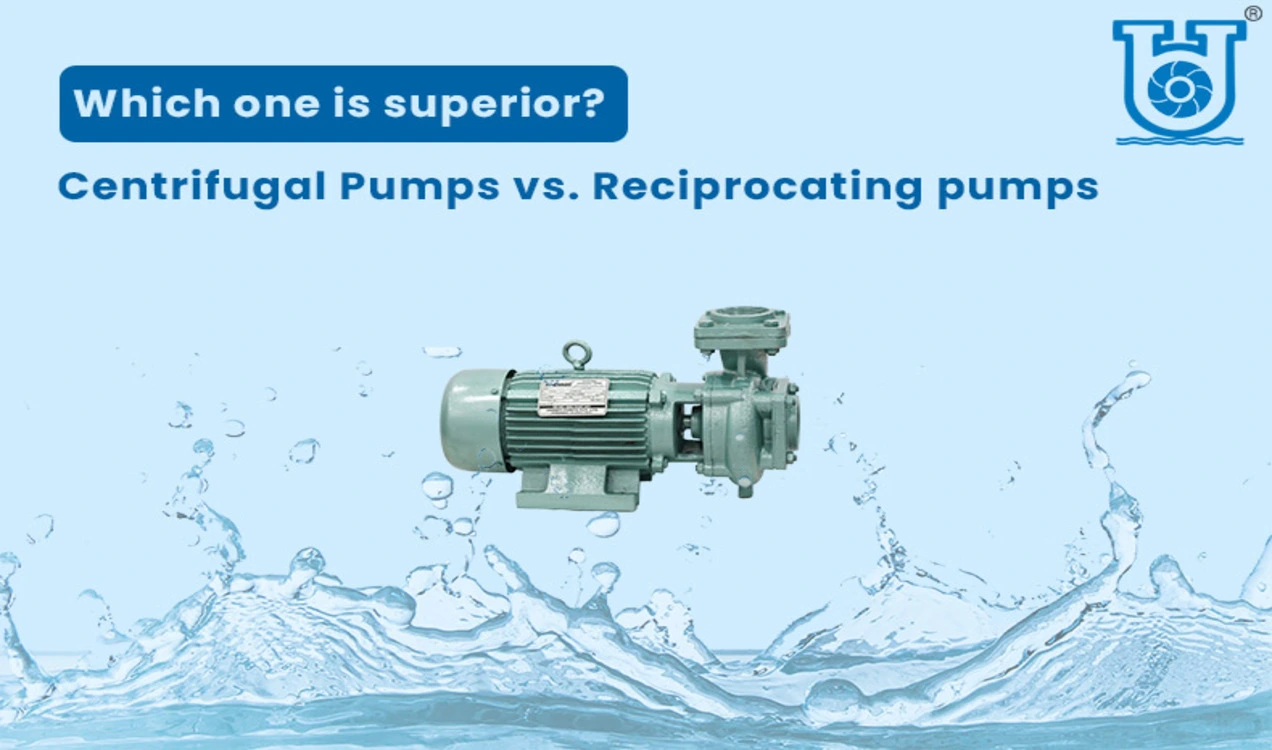Any place that needs to transfer liquid or raise the liquid’s pressure almost certainly has a pump. Thus pumps are completely mended in our lives today as they are used in almost every sector. They are widely used in industrial settings in various operations and also in manufacturing products.
Centrifugal and reciprocating pumps are the two most popular types of pumps today. They both have a variety of uses, but you may often have to choose between a multi-stage centrifugal pump and a reciprocating pump depending on the situation. Knowing how these pumps differ from one another will help you avoid challenges and performance issues.
What is a Centrifugal Pump?
A positive displacement pump that uses rotating force to transfer fluid is known as a centrifugal pump. Pressure is produced by centrifugal pumps by use of a revolving impeller inside a chamber.
Fluid is drawn into the center of the impeller’s vortex as it rotates. The liquid’s kinetic energy is subsequently converted into pressure energy by the pump’s casing. Thus we can obtain pressurized liquid in this manner through centrifugal pumps.
Applications of centrifugal pumps:
- Water purification plants
- Chemical industries
- Beverage industries
- Sewage and drainage systems
- High rise buildings
- Hydraulic control circuits
- Oil and gas industrial operations
- Domestic settings
Advantages of centrifugal pumps:
- Simply designed
- High discharge rates
- Low maintenance
- Stays shockproof during operation
What is a Reciprocating Pump?
A reciprocating pump is made with a piston-cylinder arrangement. The term “reciprocating pump” refers to a piston that rotates inside a sealed cylinder. In these pumps, the piston is driven back and forth by a motor, which forces the liquid out of the cylinder.
Applications of reciprocating pump:
- Used in various industries for pumping fluids at high pressure
- Oil refineries and petroleum industries
- Hydraulic jacks
- Used in boilers as high pressure is required
Advantages of reciprocating pump:
- Extreme high pressure can be achieved
- No priming required
- They require less starting torque
Comparison between Centrifugal Pumps and Reciprocating Pumps:
Let us understand the difference between both the pumps to decide which one is more suitable:
1. Cost and maintenance:
The design of centrifugal pumps is very simple and it has very less moving parts that can get worn out. Besides, they are also easy to install and their repairing takes less time comparatively. They are also cheaper compared to reciprocating pumps.
On the other hand, compared to centrifugal pumps, there are more moving components in a reciprocating pump, which means there is more wear and tear and they require extra maintenance.
2. Floor space:
Centrifugal pumps in comparison with reciprocating pumps are more compact and require less floor space. They have a simple design, are smaller in size and weigh less than reciprocating pumps. Moreover, small-sized centrifugal pumps can pump out the same amount of liquid as large-sized reciprocating pumps can.
3. Capacity:
Centrifugal pumps can handle high viscosity liquids like oil or muddy water while reciprocating only handle low viscosity liquids. Furthermore, compared to reciprocating pumps, centrifugal pumps have uniform torque and output and are safe to be used at high speeds. Also, centrifugal pumps have higher capacity and it can also be increased if the inlet and outlet diameters are made larger.
4. Efficiency:
A centrifugal pump’s total efficiency usually ranges between 30-60%, depending on the pump’s design and the operating characteristics of the system as opposed to the pump’s performance parameters. In contrast, a reciprocating pump unit’s total efficiency is often greater than 85% throughout its whole operational range.
5. Energy consumption:
A centrifugal pump generally uses 1.40-1.90 times as much energy as a reciprocating pump. If the centrifugal pump works at less than 30% efficiency when its system performance does not match the pump performance, the energy consumption might be as high as 2-3 times.
6. Usage:
Multistage centrifugal pumps are often preferred in operations with large volumes and low pressure. While reciprocating pumps are frequently favoured for applications requiring high pressure and low volume. Additionally, large quantities of liquid can be handled by centrifugal pumps whereas a reciprocating pump can handle less liquid due to its valves and the reciprocating action.
Concluding thoughts:
In this article, we have discussed the definition, working, characteristics, applications and differences between centrifugal and reciprocating pumps. So what do you think? Which pump is superior?
Both centrifugal and reciprocating pumps have different applications based on their designs. Both pumps are very useful for various pumping applications in their own ways. You can decide whether you want to go with a reciprocating pump or centrifugal pump based on your requirements. A choice can be made by looking at the requirements for the pumping system, the budget, installation and operating cost, maintenance, and your knowledge of both pumps.
Unnati Pumps is the largest manufacturer and exporter of high-performing pumps. We also provide customized solutions for all your pumping needs. Reach us today for more information.


